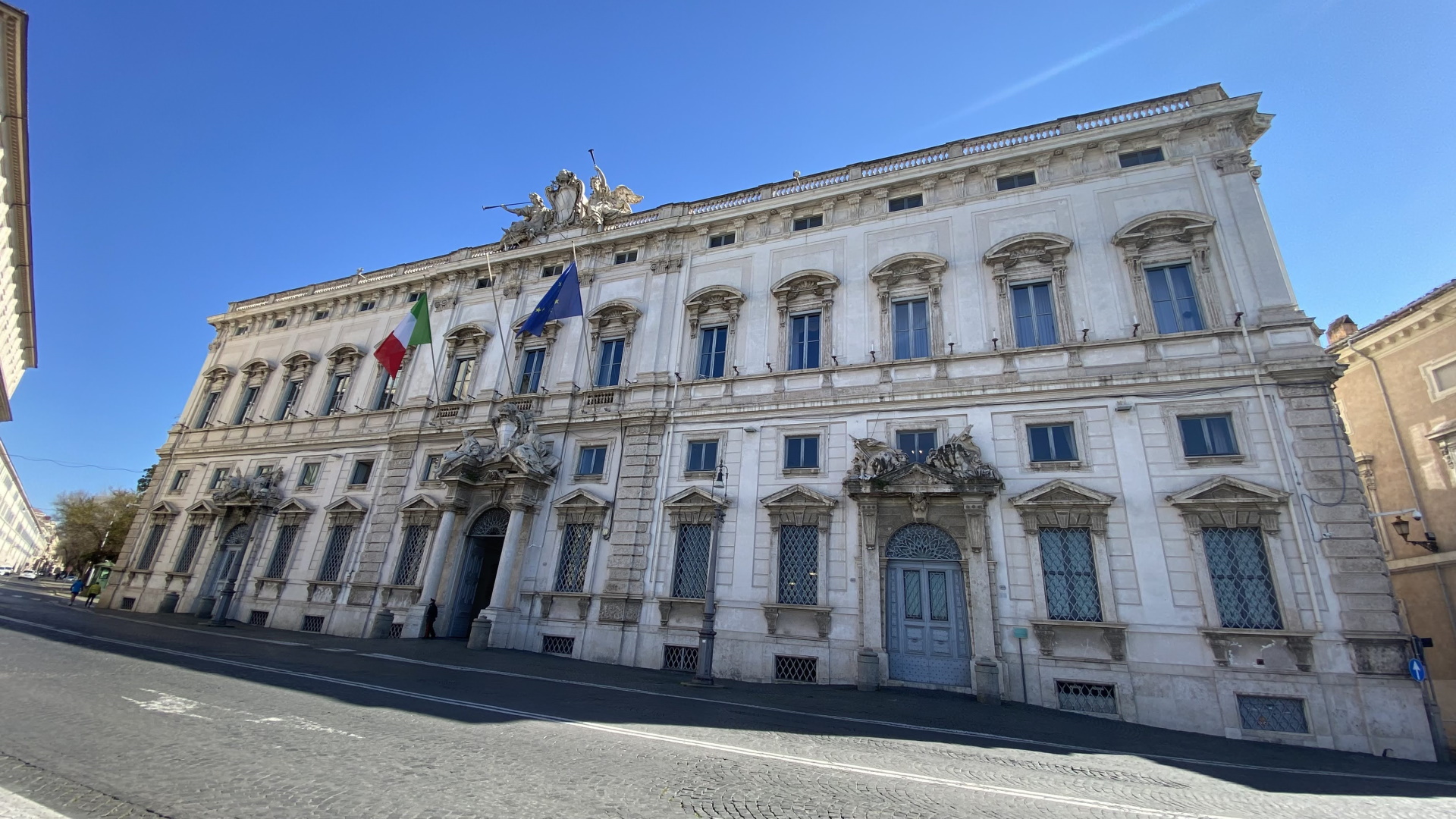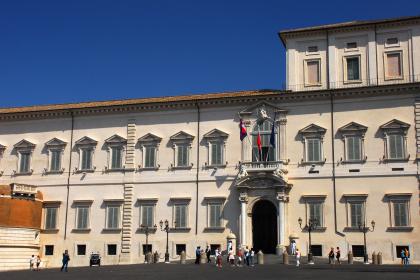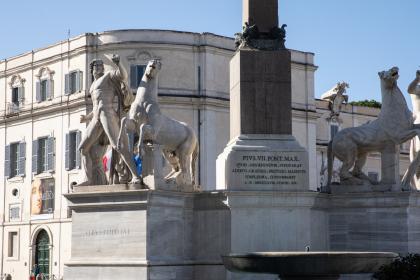
In the early 16th century, on the Quirinal Hill, a palace, called "of the cardinal of Vercelli" was built by the will of Pope Sixtus V Peretti (1585-90), who wanted to make it the seat of the Court of the Sacred Consulta, one of the highest judicial bodies of the State.
A century and a half later, Pope Clement XII Corsini (1730-40) entrusted Ferdinando Fuga with the complete reconstruction of the building, which was quickly carried out between 1732 and 1734. Fuga built a public building that was to house the Sacra Consulta congregation and the Segnatura dei Brevi and to quarter the units of the Cavalleggeri - the guards on horseback of the pontiff - and of the Corazze - the body on foot destined to escort the papal carriage. The works for the construction of the Palace involved the complete demolition of the foundations of a previous building and the residual Roman ruins of the Baths of Constantine. It was also necessary to use special construction techniques due to the ground softness, subject to water infiltration and landslides.
In the Napoleonic period, the Palazzo della Consulta was the seat of the Prefecture of the Tiber. In 1848, of the Government of the Second Roman Republic.
With the annexation of Rome to Italy in 1870, the Palazzo was confiscated by the state property. Due to its proximity to the Quirinal Palace, it was initially intended as the residence of the hereditary princes Margherita and Umberto di Savoia. Unsuitable, in 1874, it was assigned to the Ministry of Foreign Affairs, which, in 1924, was transferred to Palazzo Chigi.
The Consulta Palace became the seat of the Ministry of Colonies (the Ministry of Italian Africa since 1937) until the department was suppressed in 1953.
In 1955 it was definitively assigned to the seat of the Constitutional Court. The first public hearing of the Court (on April 23, 1956) was held in the courtroom prepared on the noble floor of the Palazzo.
Its façade, on two floors with a mezzanine, is punctuated by mighty pilasters and has high windows with very prominent tympanums. The central door is crowned by the statues of Justice and Religion (F. Maini, 1739). On the balustrade is the Corsini coat of arms between winged figures (P. Benaglia, 1735). A spectacular two-story staircase and double ramps opens onto the courtyard; inside, the 18th-century decorations and frescoed ceilings are still partially preserved.
The Quirinale Palace and square

 Condividi
Condividi
The Scuderie del Quirinale

 Condividi
Condividi
Church of San Silvestro al Quirinale

 Condividi
Condividi
Information
Visits to the Palazzo della Consulta can be booked by schools, universities and experts from Italy and abroad
> Visiting Conditions
 Condividi
Condividi
Location
To find out about all accessibility services, visit the Rome accessible section.











































